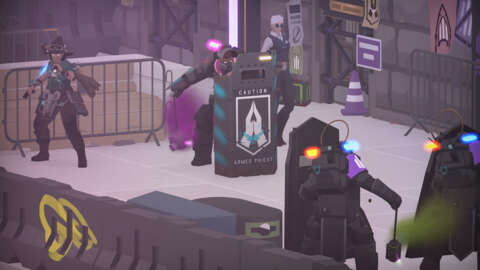Perfectionism is a great source of misery for me. It’s the thing that keeps me from writing a book, striking up more conversations, and trying my hand at woodcrafting. And it’s what makes me hyper-critical of the things I do do (if you think internet commenters can be mean about someone’s writing, you would weep at what I make of my own work). But from a standpoint that I’m sure no therapist would endorse, perfection can also be delightful.
When it comes to playing games, there is no shortage of ways you can achieve greatness and soak in the enjoyment that comes with that. Clearing the screen in Tetris, pulling off a sick 360 no-scope, or turning the tables and eking out a victory with a sliver of health can all be immensely satisfying experiences.
But there’s something I’ve always found about Into the Breach–and, more recently, the excellent Tactical Breach Wizards, which shares some design DNA with Into the Breach–that transcends the satisfaction I’ve ever found with any other game.
Tactical Breach Wizards
As in Into the Breach, Tactical Breach Wizards centers around the manipulation of spacing and reacting to the certainty of knowing what comes next. Within its turn-based and grid-based format, you’re given insight into what your opponents will do next, meaning you know precisely what dire future awaits as soon as you click End Turn. Maybe you’re going to lose a unit, fail an objective, or have to restart entirely. Not being a roguelike, as Into the Breach is, the stakes are much lower in Tactical Breach Wizards, but that clarity of the consequences of your failure elevates the impact of your choices. You can clearly see the doom to come–and then you get to bask in the pleasure of having figured out how to upend that outcome.
And it’s the way in which you do that in Tactical Breach Wizards that makes it so enjoyable. You can directly inflict damage on foes, and that is a reliable means of dealing with them in many cases. But quite often, you have to rely on adjusting their positioning and upcoming actions to facilitate your desired outcome. Oh, you planned to attack me? Actually, you’re going to spend the next turn knocking out your teammate who would have dealt me a fatal blow, after watching as half of your allies are thrown out of windows.
Because you can preview the result of your choices, you can play out every move on the chess board to find the best option. And that result is often so wildly beyond my initial expectations of what is possible, particularly as the game gives your characters more and more upgrades to navigate and alter the battlefield.
Tactical Breach Wizards eventually became a constant exercise in twisting things around on every turn of each level. I would spend my time in this almost zen-like state of flowing to and fro within the constraints and threats around me, manipulating enemies, probing for different possibilities until finding that absolute perfect series of moves.
Any time I start to find a game too easy, I’m quick to jack up the difficulty until I can be sufficiently miserable. Yet in Tactical Breach Wizards, while the thought crossed my mind periodically, I found that I ended up positively giddy with the end result of so many levels, cackling in disbelief, and I didn’t want to rob myself of that sensation. I never fail a level, something that in most games would elicit boredom, due to the fact that it’s usually the act of standing on the precipice of failure that generates excitement for me. Instead, the excitement here comes from seeing if I can thread the needle in a way that feels impossible when first examining a new level–and successfully managing to do so is a thrill unlike almost any other. Combine this with the number of times I would recoil at the sight of a challenging level, only to find a way to flawlessly complete it in a single turn, and Tactical Breach Wizards plays right into my perfection-obsessed brain.
It’s not possible to complete every level in one turn–or at least I don’t think so, though the way in which you can chain abilities to extend a single turn is one of the big gameplay differentiators from Into the Breach. But it is possible far more often than those first glimpses, even at the larger-scale maps from late in the game, would suggest. The prospect of victory seems daunting, and the notion of achieving success in one turn is laughable, but it is frequently possible and leads to an incredible feeling when managing to pull it off.
A good ol’ defenestration
My total playtime in Tactical Breach Wizards ended up far above the norm from those I’ve spoken with. Some of that is from doing so many of the bonus objectives and all of the side missions, none of which I was willing to miss thanks to both the game’s stellar, hilarious writing and another opportunity to do what initially seemed impossible. But the bigger factor in my playtime was the excessive amount of time I’d spend on each turn, examining what approach I could take, the different outcomes that could be achieved, and the wide range of possibilities that exist. (The fact that it never gets old blasting enemies out of windows–defenestrating them, as the game happily teaches you–didn’t hurt, either.)
Perfectionism might be one of my biggest challenges in life, but in Tactical Breach Wizards, it’s the key to making the most of one of my favorite gaming experiences ever.


